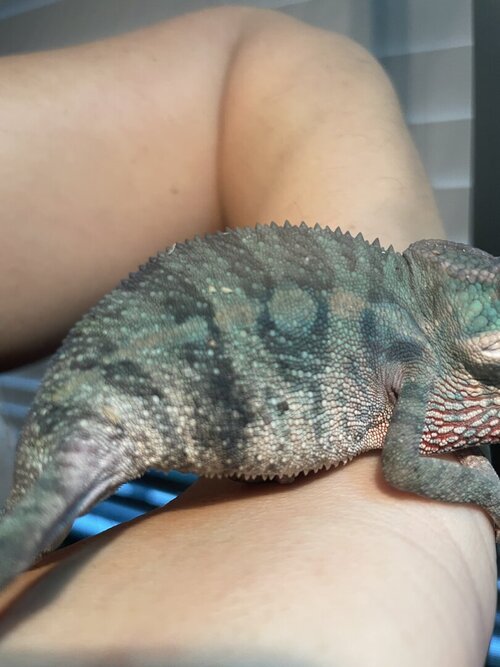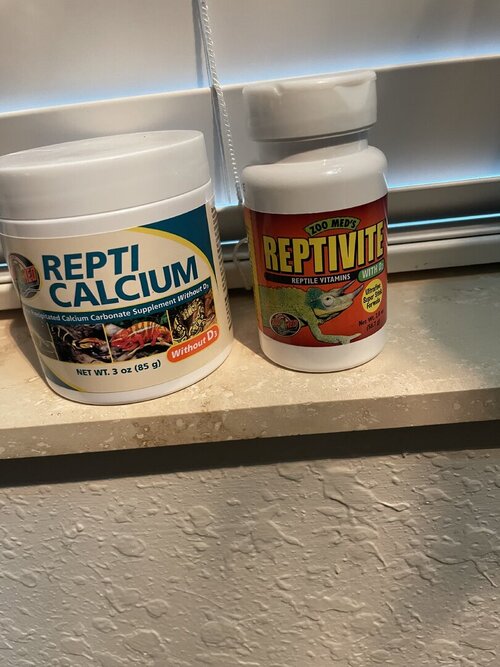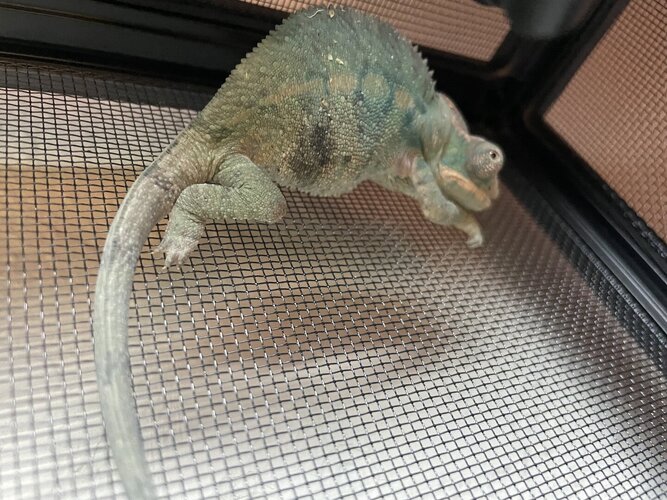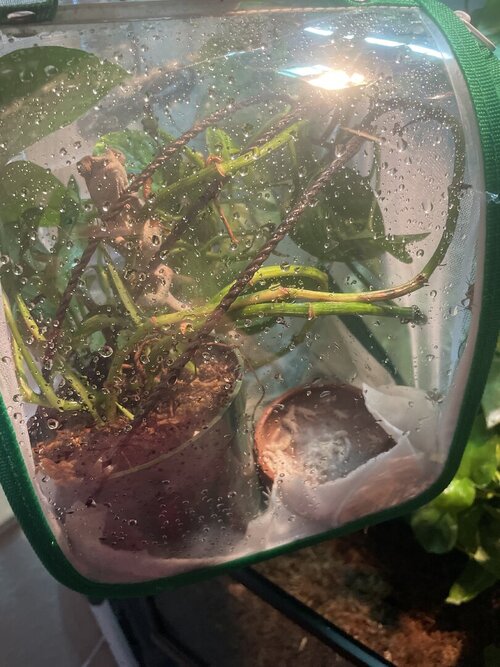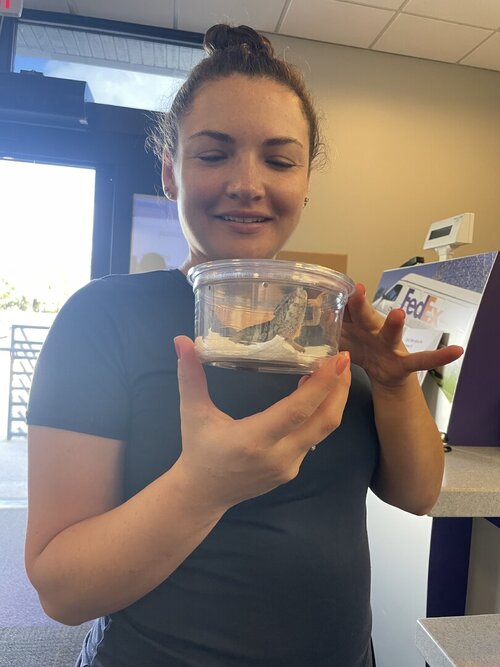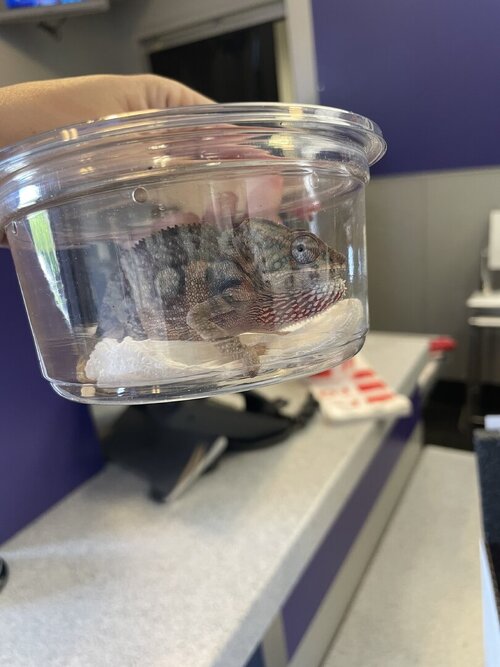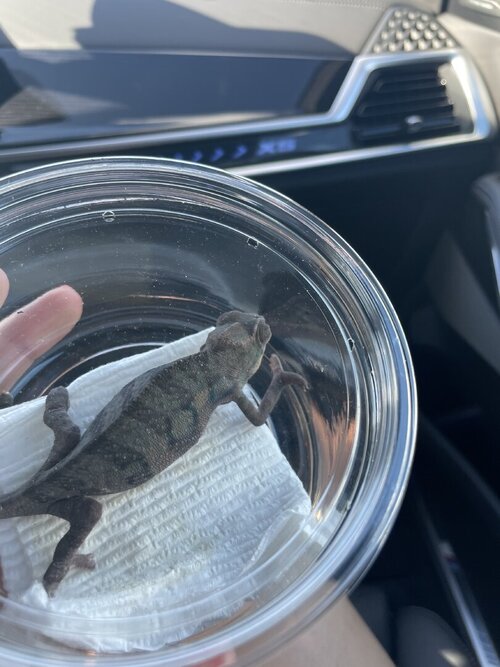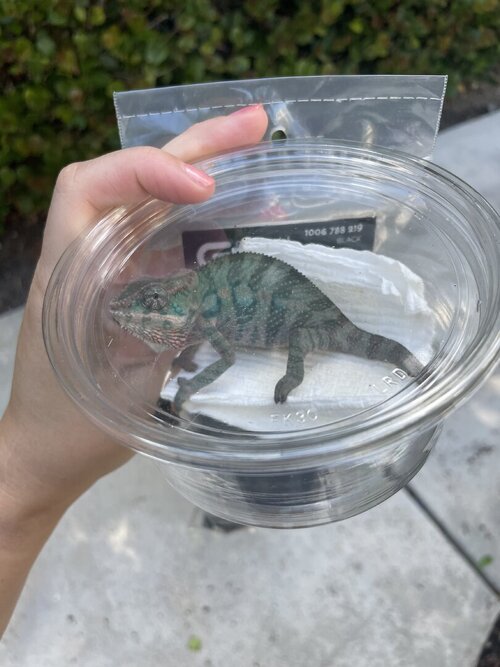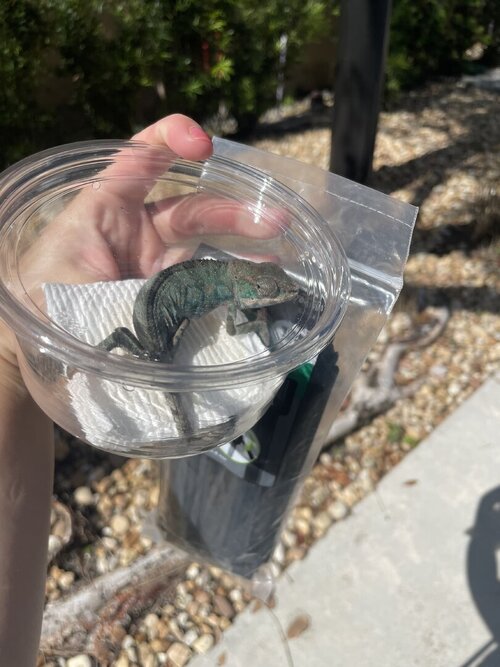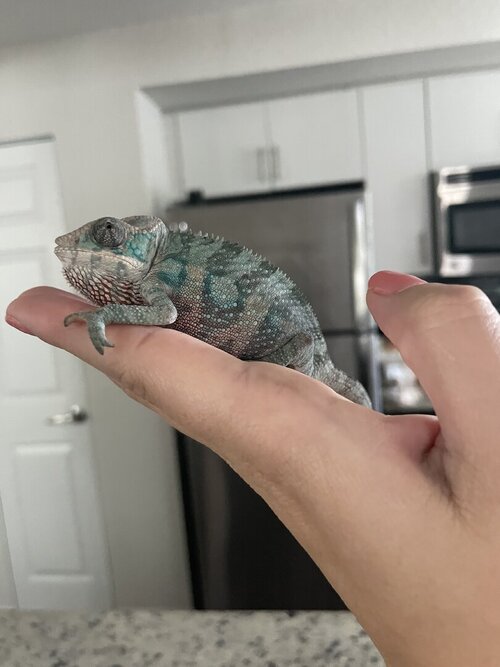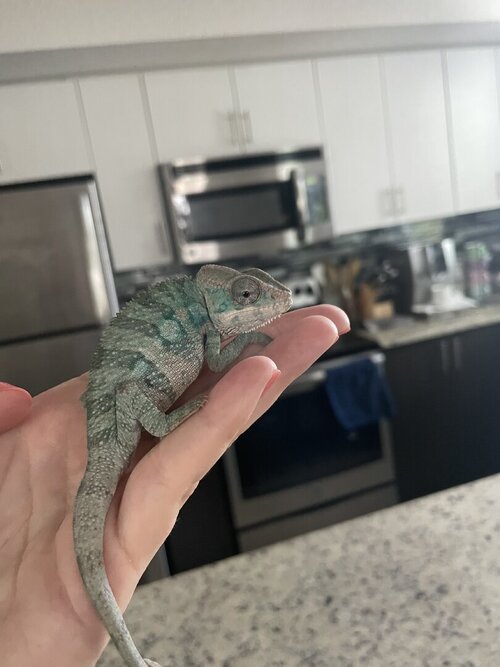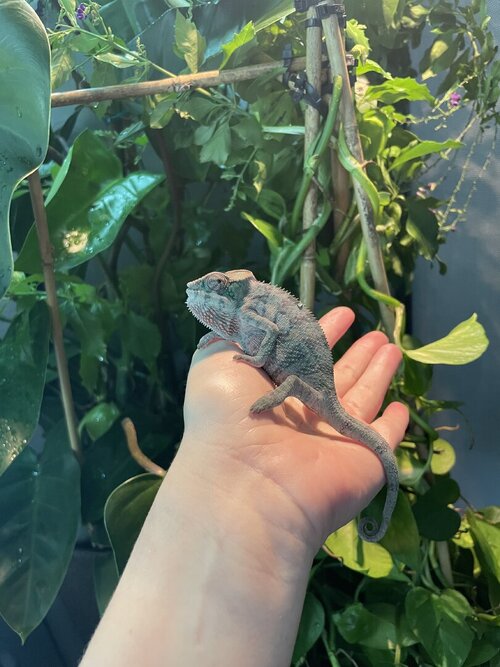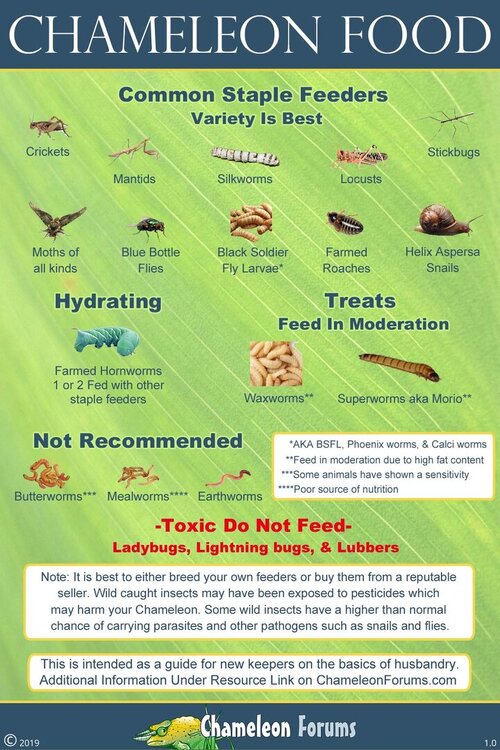Roxanimals
Member
I have a 4 month old Panther chameleon male that was shipped to me and I received Tuesday, June 27.
I made a tremendous mistake of putting a philodendron and a golden dew drop in his enclosure. I heavily washed both of these plants before putting them in his enclosure, luckily.
Friday he fell out of his tree. The second and third pictures of his beautiful blue and good grip on my hand are right after his first fall. I spoke to his breeder, we identified that the plants were toxic, I removed them and replaced them with pothos. I gave him a “bath”, and cycled 2 gallons of water through his cage to clean it out.
He is having severe dexterity issues. He continuously grabs his front arm with his back leg immobilizing himself. He then gets frustrated and scared that he cannot move and ultimately ends up falling. He primarily does this when he is crawling in the pothos.
After being a little “spicy” about me removing his holding himself he can climb branches normally and he has no issues climbing the cage mesh to hunt crickets. He is eating.
I’ve heard of activated charcoal suspension but seeing the exposure has long passed and he has been in “recovery” for 3.5 days I am not sure what to do for him.
Any recommendations are greatly appreciated.
I made a tremendous mistake of putting a philodendron and a golden dew drop in his enclosure. I heavily washed both of these plants before putting them in his enclosure, luckily.
Friday he fell out of his tree. The second and third pictures of his beautiful blue and good grip on my hand are right after his first fall. I spoke to his breeder, we identified that the plants were toxic, I removed them and replaced them with pothos. I gave him a “bath”, and cycled 2 gallons of water through his cage to clean it out.
He is having severe dexterity issues. He continuously grabs his front arm with his back leg immobilizing himself. He then gets frustrated and scared that he cannot move and ultimately ends up falling. He primarily does this when he is crawling in the pothos.
After being a little “spicy” about me removing his holding himself he can climb branches normally and he has no issues climbing the cage mesh to hunt crickets. He is eating.
I’ve heard of activated charcoal suspension but seeing the exposure has long passed and he has been in “recovery” for 3.5 days I am not sure what to do for him.
Any recommendations are greatly appreciated.
Attachments
-
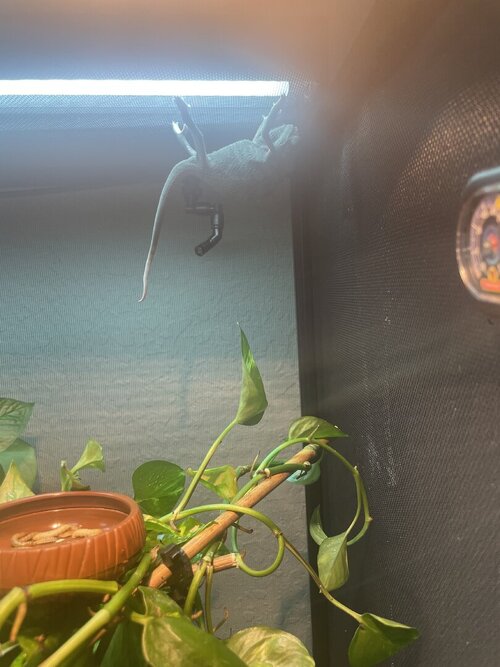 IMG_5374.jpeg140.3 KB · Views: 104
IMG_5374.jpeg140.3 KB · Views: 104 -
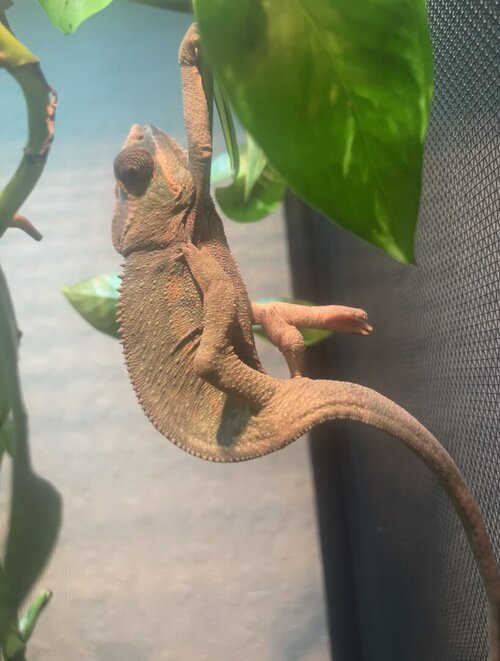 IMG_5375.jpeg112.5 KB · Views: 106
IMG_5375.jpeg112.5 KB · Views: 106 -
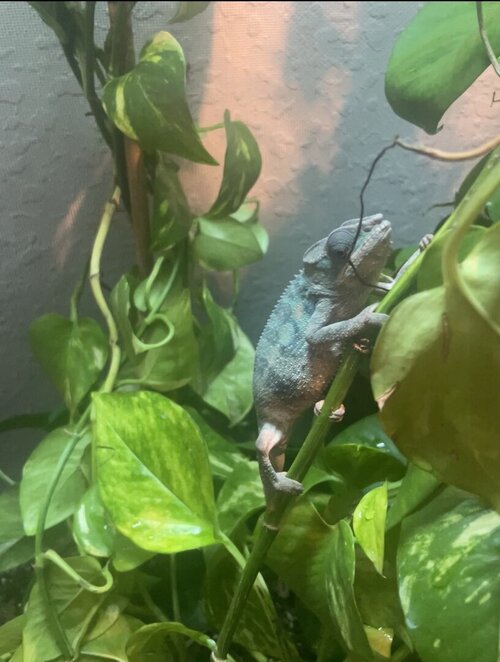 IMG_5376.jpeg118.3 KB · Views: 102
IMG_5376.jpeg118.3 KB · Views: 102 -
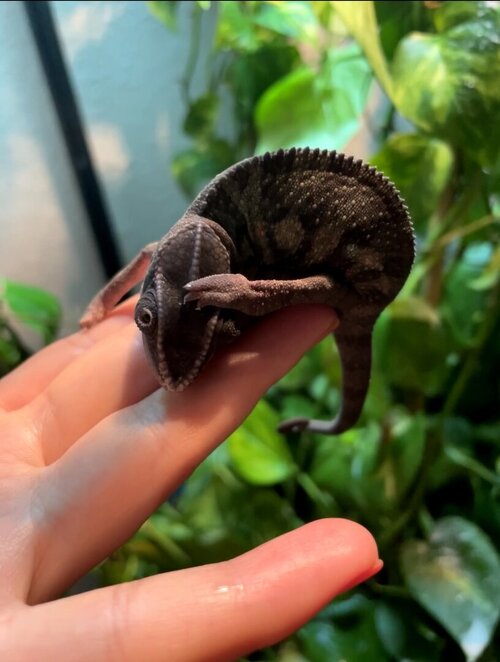 IMG_5377.jpeg97.4 KB · Views: 109
IMG_5377.jpeg97.4 KB · Views: 109 -
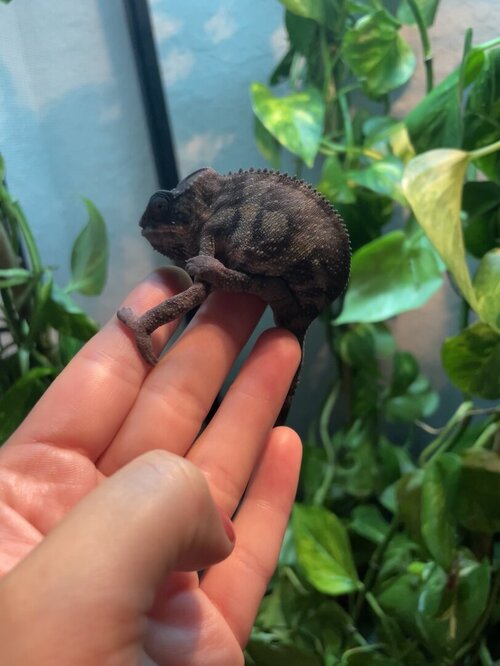 IMG_5378.jpeg101.6 KB · Views: 110
IMG_5378.jpeg101.6 KB · Views: 110 -
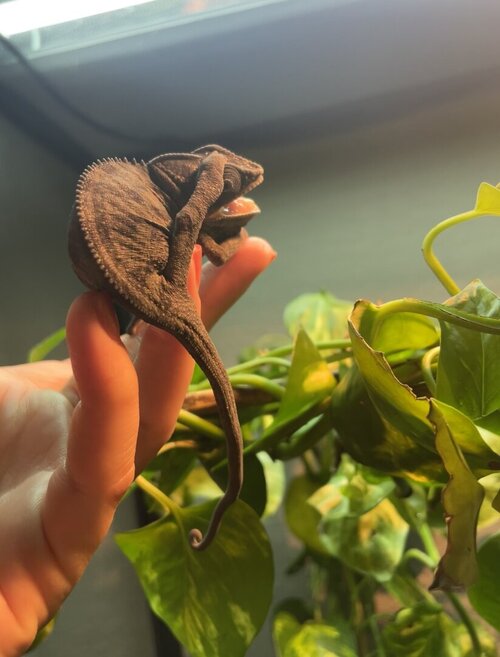 IMG_5379.jpeg97.2 KB · Views: 104
IMG_5379.jpeg97.2 KB · Views: 104 -
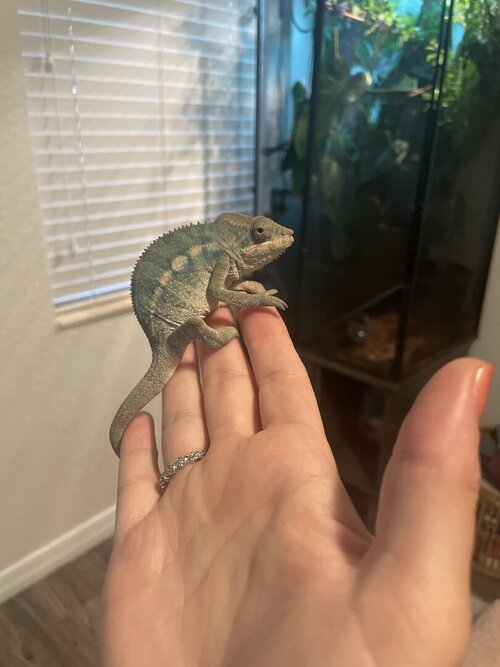 70985420956__A7F6D3CE-3017-4BBA-A24C-8F1745642651.jpeg96.5 KB · Views: 103
70985420956__A7F6D3CE-3017-4BBA-A24C-8F1745642651.jpeg96.5 KB · Views: 103 -
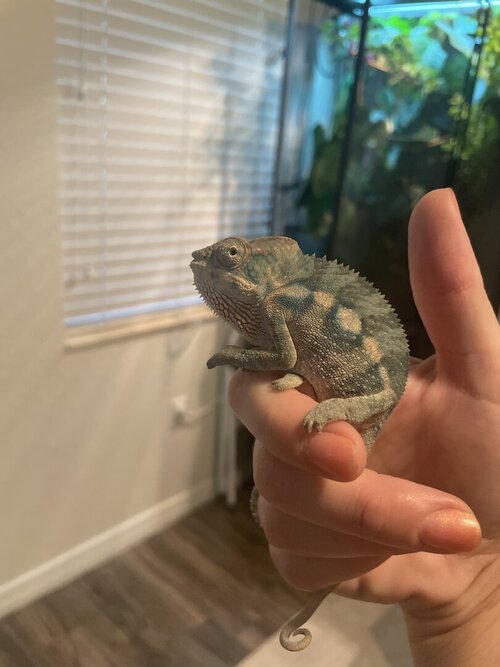 70985423996__AB6F7395-8852-49F6-AFFB-AA557C356B01.jpeg100 KB · Views: 95
70985423996__AB6F7395-8852-49F6-AFFB-AA557C356B01.jpeg100 KB · Views: 95 -
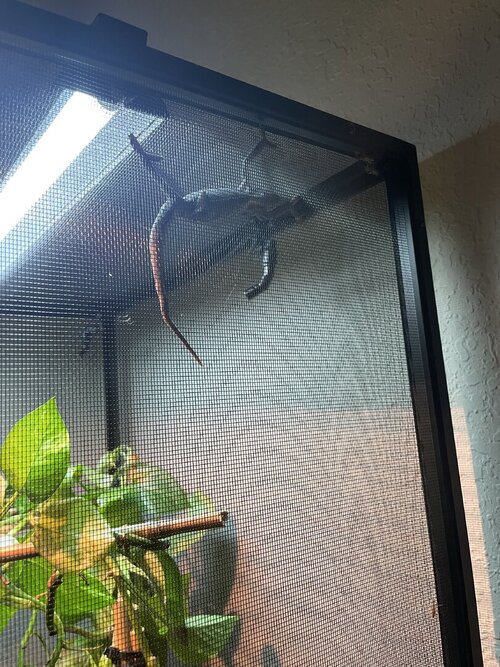 IMG_5334.jpeg307 KB · Views: 96
IMG_5334.jpeg307 KB · Views: 96








